
Methods to Calculate Capacity Utilization Rate: a Literature Review
Abstract:Based on the research literatures, this paper systematically introduces several methods to calculate capacity utilization rate: trend-through-peak, function method and data envelope analysis, in order to provide reference for the related research. By comparing the assumption, theory basis as well as definition of capacity of different methods, this paper finds that data envelope analysis may be more suitable for China’s current situation.
Key Words:capacity utilization rate;trend-through-peak;function method;data envelope analysis
内容提要:本文基于对研究文献的系统梳理,介绍产能利用率的几种主要测算方法——峰值法、函数法与数据包络分析方法,旨在为相关研究提供参考。通过对不同方法的假设条件、理论基础以及生产能力界定标准的比较分析,本文认为,数据包络分析方法可能是较为适合中国当前情况的测算方法。
关键词:产能利用率; 峰值法; 函数法; 数据包络分析方法
中图分类号:F403.3 文献标志码:A
一、引言
产能过剩问题是当前中国经济运行的主要问题之一,对该问题的研究也越来越受到学术界的关注。研究产能过剩问题,最基本的是要判断产能过剩的程度及变化趋势,这就要求对产能利用率进行定量测算。目前已有学者进行了这方面的研究。沈利生(1999)利用峰值法估算了我国的潜在GDP水平进而计算出潜在产能利用率。龚刚和杨琳(2002)假设用电量与资本服务使用量之间存在固定比值关系,然后以用电量代替资本使用服务量,进而测算出设备利用率。韩国高等(2011)利用行业面板模型的广义矩估计法,估计了中国28个工业制造业的可变成本方程,并根据成本函数法测算了各行业的产能利用率。王维国和袁捷敏(2012)在测算产能利用率时则将产能界定为物质资本存量的函数并假定产能与物质资本存量为常数比例关系。杨光(2012)构建了一个含有微观基础的企业投资模型,得出企业设备利用率的定义式,并测算了中国的设备利用率。总体而言,目前国内学术界对产能利用率定量测算的研究还比较少,而且对各种测算方法及其理论基础缺乏比较分析。
总体来看,目前国内对于产能利用率的定量测算工作还处于起步阶段。不同于国内,许多发达国家则很早就开始了对产能利用率的定量测算研究。以美国为例,早在20世纪60年代,就有五个机构独立开展了产能利用率的测算工作。五个机构中,大多数机构使用的是统计调查法,而沃顿商学院公布的“沃顿指数”(Wharton Index)则是五项工作中唯一具有经济理论基础的工作,其所采用的“峰值法”(trend-through-peak)开创了基于经济学理论的经济分析法的先河。在此之后,一些研究者又提出了测算产能利用率的函数方法与数据包络分析方法(Data Envelope Analysis,DEA)。
本文基于现有的研究文献,梳理产能利用率的主要测算方法,并对这些方法进行比较分析,旨在为后续的相关研究提供参考。本文主要关注两方面的内容。一是梳理测算产能利用率的不同方法。总体来看,产能利用率的测量方法可分为调查统计法和经济分析法两大类。其中,调查统计法是在不同行业内选定样本企业,定时调查其生产能力,得到的结果较为客观,但需要对大量企业进行定期调查,人力与物力消耗较高,通常为统计部门所使用。经济分析法以经济理论为基础,推导出某种测算方法,然后利用一些较易获取的数据推测出产能利用率,通常为学术研究者所采用。本文主要关注经济分析法,梳理了目前的三种方法:峰值法、函数法及数据包络分析方法,相关内容分别见第二至四部分。由于后两者方法使用较多,我们重点关注这两种方法。二是对不同方法假设条件、理论基础以及生产能力界定标准的比较分析。通过梳理产能利用率的测算方法,可以发现,不同方法的假设条件和理论基础存在着明显差异,而且不同方法对应的生产能力的界定标准也不尽相同。产能利用率是实际产出与生产能力的比值,这一点已被广泛接受,但是生产能力如何界定,目前尚无统一认识,因此,如果不加区别、直接将不同方法的测算结果进行比较可能是不合适的。本文通过对不同方法的假设条件、理论基础以及生产能力界定标准进行比较分析,旨在为选择适合中国当前国情的测算方法提供参考,这方面内容见最后一部分。
二、峰值法
在美国早期开展的关于产能利用率的五项工作中,沃顿商学院公布的“沃顿指数”(Wharton Index)是唯一具有经济理论基础的工作。这项工作的主要开创者Klein(1960)将生产能力(capacity)定义为厂商达到竞争均衡(competitive equilibrium)时的产出水平,进而为产能过剩提供了理论解释:在完全竞争条件下,厂商的均衡产出即为平均成本函数最低点时的产出,但在非完全竞争条件下,厂商的均衡产出低于平均成本函数最低点时的产出(图1与图2),两者之差即“过剩生产能力”(excess capacity)。
在测算产能利用率时,Klein等(Klein & Summers,1966;Klein & Long,1973)实际上使用的是峰值法。该方法假设产量达到峰值时的产能利用率为100%,其他时期的产能利用率可按照峰值的产出进行推算。但正如Phillips(1963)与Frank(1968)所指出的,现实中存在所谓的“弱高峰”(weak peak),即产量达到峰值时生产能力未充分利用,如果将这些“弱高峰”的产能利用率视为100%,将会高估产能利用率。作为对上述质疑的回应,Klein等(Klein & Preston,1967;Klein & Su,1979)随后使用生产函数来估算部门的产能,并依此对峰值法的结果进行调整,但这种调整方法假设就业率与资本利用率相等并需先验设定生产函数形式及规模报酬,同样受到质疑(Copeland,1968)。









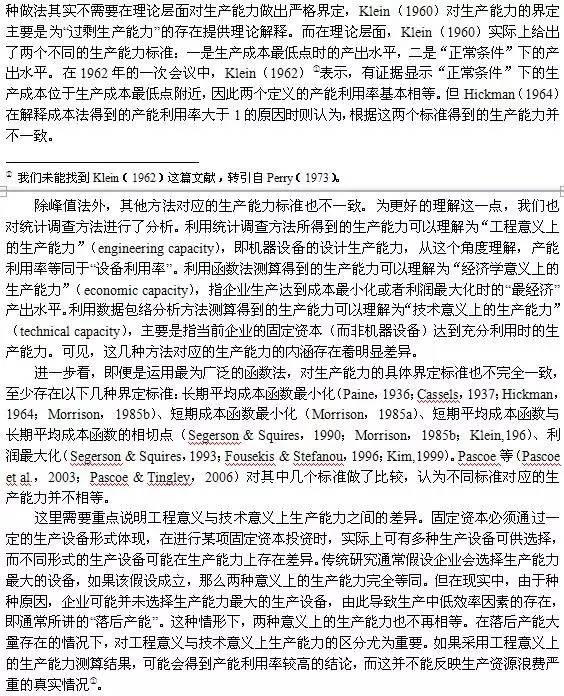
与发达经济体的情形不同,目前中国工业的落后产能普遍存在,而且非市场因素的影响也比较大,因此,工程意义上产能利用率的技术有效假设、经济学意义上生产能力的企业生产成本最小化或者利润最大化假设可能并不完全适用。基于这种考虑,使用技术意义上生产能力测算的产能利用率可能更符合中国的现实情况。
参考文献:
[1] Berndt, E.R. and Hesse, D. M. Measuring and Assessing Capacity Utilization in the Manufacturing Sectors of Nine OECD Countries[J], European Economic Review, 1986, (30).
[2] Berndt, E. R. and Morrison, C. J. Capacity Utilization Measures: Underlying Economic Theory and an Alternative Approach[J], American Economic Review, 1981, (71).
[3] Bruno de Borger and Kristiaan Kerstens. The Malmquist Productivity Index and Plant Capacity Utilization[J], The Scandinavian Journal of Economics, 2000, (102).
[4] Bye, Torstein, Annegrete Bruvoll and Jan Larsson. Capacity Utilization in a Generalized Malmquist Index Including Environmental Factors-A Decomposition Analysis[J], Land Economics, 2009, (85).
[5] Cassels, J. M. Excess Capacity and Monopolistic Competition[J], The Quarterly Journal of Economics, 1937, (51).
[6] Coelli, Tim. Grifell-Tatje and Perelman, Capacity Utilisation and Profitability: a Decomposition of Short-Run Profit Efficiency[J], International Journal Production Economics, 2002, (79).
[7] Copeland, Morris A. On the Measurement of Capacity Utilization: Comment[J], American Economic Review, 1968, (58).
[8] Färe, Rolf, Shawna Grosskopf and Jim Kirkley. Multi-output Capacity Measures and Their Relevance for Productivity[J], Bulletin of Economic Research, 2000, (52).
[9] Färe, Rolf, Shawna Grosskopf and Edward C. Kokkelenberg. Measuring Plant Capacity, Utilization and Technical Change: A Nonparametric Approach[J], International Economic Review, 1989, (30).
[10] Frank De Leeuw. Book Review: The Wharton Index of Capacity Utilization by Lawrence R. Klein; Robert Summers[J], American Economic Review, 1968, (58).
[11] Garofalo and Malhotra. Regional Measures of Capacity Utilization in the 1980s Regional Measures of Capacity Utilization in the 1980s[J], Review of Economics and Statistics, 1997, (79).
[12] Gokcekus, Trade liberalization and capacity utilization: New Evidence from the Turkish Rubber Industry[J], Empirical Economics, 1998, (23).
[13] Hickman. On a New Method of Capacity Estimation[J], Journal of the American Statistical Association, 1964, (59).
[14] Johansen, L. Production Functions and the Concept of Capacity[Z]. Recherches Recentes sur la Function de Production, Collection Economic Mathemnatique et Econometrie, 1968, (2).
[15] Karagiannis, Roxani. A System-of-equations Two-stage DEA Approach for Explaining Capacity Utilization and Technical Efficiency[J], Annals of Operations Research, 2013
[16] Kim, H. Youn. Economic Capacity Utilization and its Determinants: Theory and Evidence[J], Review of Industrial Organization, 1999, (15).
[17] Kirkley, James, Catherine J. Morrison Paul and Dale Squires. Capacity and Capacity Utilization in Common-pool Resource Industries: Definition, Measurement, and a Comparison of Approaches[J], Environmental and Resource Economics, 2002, (22).
[18] Klein Lawrence R., and Vincent Su. Direct Estimates of Unemployment Rate and Capacity Utilization in Macroeconometric Models[J], International Economic Review, 1979, (20).
[19] Klein, Lawrence R. Some Theoretical Issues in the Measurement of Capacity.[J] Econometrica, 1960, (28).
[20] Klein, Measures of Productive Capacity[Z], Hearings before the Subcommittee on Economic Statistics of the Joint Economic Committee, 1962, 87 Cong. 2 sess.
[21] Klein, Lawrence R. and Robert Summers. The Wharton Index of Capacity Utilization[R], Economics Research Unit, 1966.
[22] Klein, L. R., and R. S. Preston. Some New Results in the Measurement of Capacity Utilization[J], American Economic Review, 1967, (57).
[23] Klein, Lawrence R. and Virginia Long. Capacity Utilization: Concept, Measurement, and Recent Estimates[J], Brookings Papers on Economic Activity, 1973, (1973).
[24] Lazkano. Cost Structure and Capacity Utilisation in Multi-product Industries: An Application to the Basque Trawl Industry[J], Environmental Resource Economics, 2008, (41).
[25] Lindebo, Erik, Ayoe Hoff, Niels Vestergaard. Revenue-based Capacity Utilisation Measures and Decomposition: The Case of Danish North Sea Trawlers[J], European Journal of Operational Research, 2007, (180).
[26] Morrison, C. J. Primal and Dual Capacity Utilization: An Application to Productivity Measurement in the U. S. Automobile Industry[J], Journal of Business & Economic Statistics, 1985a, (3).
[27] Morrison, C. J. On the Economic Interpretation and Measurement of Optimal Capacity Utilization with Anticipatory Expectations[J], Review of Economic Studies, 1985b, (52).
[28] Morrison, C. J., and Berndt, E. R. Short Run Labor Productivity in a Dynamic Model[J], Journal of Econometrics, 1981, (16).
[29] Nelson, Randy A. On the Measurement of Capacity Utilization[J], Journal of Industrial Economics, 1989, (37).
[30] Paine, C. L. Rationalisation and the Theory of Excess Capacity[J], Economica, 1936, (9).
[31] Pascoe, S., and Diana Tingley. Economic Capacity Estimation in Fisheries: A Non-parametric Ray Approach[J], Resource and Energy Economics, 2006, (28).
[32] Pascoe, S., J. E. Kirkley, D. Gréboval and C.J. Morrison-Paul. Measuring and Assessing Capacity in Fisheries, FAO Fisheries Technical Paper. 2003, No. 433/2.
[33] Perry, G. L. Capacity in Manufacturing[J], Brookings Papers on Economic Activity, 1973, (4).
[34] Phillips, Almarin. An Appraisal of Measures of Capacity[J], American Economic Review, 1963, (53).
[35] Segerson Kathleen and Dale Squires. On the Measurement of Economic Capacity Utilization for Multi-product Industries[J], Journal of Econometrics, 1990, (44).
[36] Segerson Kathleen and Dale Squires. Capacity Utilization under Regulatory Constraints[J], The Review of Economics and Statistics, 1993, (75).
[37] 龚刚,杨琳.我国生产能力利用率的估算[R].北京:清华大学经济管理学院工作论文.2002(16).
[38] 韩国高,高铁梅,王立国,齐鹰飞,王晓姝.中国制造业产能过剩的测度、波动及成因研究[J].北京:经济研究.2011(12).
[39] 沈利生.我国潜在经济增长率变动趋势估计[J].北京:数量经济技术经济研究.1999(12).
[40] 王维国,袁捷敏.我国产能利用率的估算模型及其应用[J].湖北:统计与决策.2012(20).
[41] 杨光.中国设备利用率与资本存量的估算[J].北京:金融研究.2012(12).
.


财经自媒体联盟

4000520066 欢迎批评指正
All Rights Reserved 新浪公司 版权所有




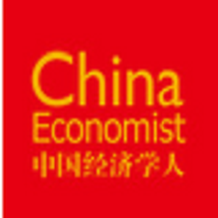








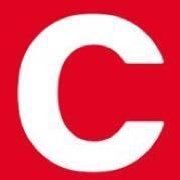
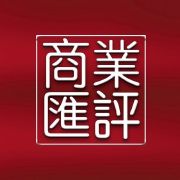

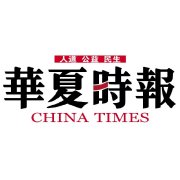














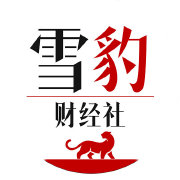
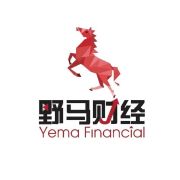


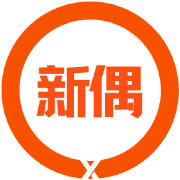




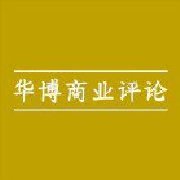


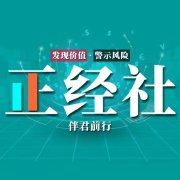






 第一财经日报
第一财经日报  每日经济新闻
每日经济新闻 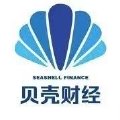 贝壳财经视频
贝壳财经视频  尺度商业
尺度商业  财联社APP
财联社APP  量子位
量子位  财经网
财经网  华商韬略
华商韬略